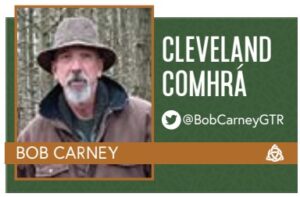Irish Language Revival: Insights, Festivals, and Future Challenges
- John O’Brien, Jr.
- September 1, 2024
- Edited 3 months ago
Table of Contents
Rambling Thoughts

Conas atá sibh? I hope everyone is doing well and enjoying what’s left of summer. As you are probably aware, our new set of Speak Irish Cleveland classes are due to start this month. We are, at our core, an introduction to the Irish language. Most of the folks that start the class are absolute beginners to the language, but over time, many of our students from years past have returned every session, and we accommodate them in a more advanced group.
What to Expect in Irish Class
Sure, language instruction is at the forefront, but Irish history and culture are also a part of every session. Another benefit is meeting and socializing with people just like you—those with a curiosity about their heritage. Many in our little “family” have found themselves becoming active in other aspects of the Irish community. Still, others meet up on a regular basis to study together, although I suspect sometimes the social aspect is stronger than the study aspect! Either way, it’s a great way to make new friends.
The Summer Festivals
We made it to a few of the festivals this summer with the wolfhounds and little Doolin and were able to reconnect with some old friends and meet some new ones. From an Irish language perspective, there were a couple of highlights. I was asked by the organizers of The Ohio Scottish Games to give a presentation comparing Irish and Scots Gaelic. I explained that I didn’t speak any Scots Gaelic, but that didn’t seem to bother them. I prepared a little talk comparing the languages, their histories, similarities, and differences. I planned to end the presentation by sharing a list of words and phrases that you could use in everyday conversations, just by substituting the Irish or Scots Gaelic word into an English conversation. I’ve done similar talks dozens of times and have been mostly well received.
This time I was slightly apprehensive—what if there was a Scots Gaelic speaker there and I botched up the pronunciation or made an error in my research? (I’m no stranger to looking like a fool according to my wife). But I would also hate to “instruct” someone incorrectly and have them use it the way I hoped they would. Anyway, around 5:15, I made my way to the building where it was to be held and was pleasantly surprised to see some folks already seated. As more and more people showed up and we had a minute or two left before I was to begin, I asked if there were any Irish speakers in the audience. There were none. I then asked if there were any Scots Gaelic speakers. A young man sitting in the front row raised his hand and said he grew up speaking the language in Scotland. I explained my predicament to Liam and asked if he could help me when we shared our everyday Irish and Scots Gaelic words and phrases. He was a great sport, and we both learned a great deal about our different but related languages. So Liam, if you happen to read this column, tapadh lebh (thank you in Scots Gaelic).
I was also introduced to a young family that will soon be joining our Irish Wolfhound group. We’re not strictly wolfhound owners; we have some Scottish dogs and other Irish breeds that join us. Anyway, Conor is thirty-eight years old and came here twelve years ago. He attended school in Ireland and received his leaving certificate in Irish about twenty years ago. He told me that after school, he and many of his fellow schoolmates never really used the language again. He told me that for the most part, he doesn’t really remember much of it. I can relate; today, it’s difficult to believe I studied Spanish in high school. I can recall only a very small amount and would probably get my face slapped if I ever tried using it. Maybe after a couple of our wolfhound gatherings, where I usually give a very short language lesson, mostly pet-related, Conor might pick up where he left off.
In both countries, there are supporters of the languages and detractors who feel that the time and money spent could be put to better use. One article I read termed it as something that one could actually use and benefit from.
Climate Change and Language
I read a rather fascinating article about the fragility of many indigenous languages. There are approximately 7,000 languages spoken around the world, and 4,000 of them are spoken by indigenous groups. Those groups represent about 6% of the population. Brazil boasts 274 indigenous languages alone. Scientists are realizing that each language spoken carries bits of history and local knowledge that can easily be lost forever as languages disappear. Now climate change is being factored in as one more reason some languages are disappearing as people migrate to escape drought. We saw a dramatic loss of Irish speakers during the famine years, and the language has still not recovered to what it once was. Another big factor is technology. The world is shrinking; we can communicate around the globe thanks to the internet. Today, English is the language of finance. The article listed some statistics I found telling. Currently, there are 1.3 billion native Chinese speakers; 486 million native Spanish speakers; 380 million native English speakers; 362 million native Arabic speakers; 345 million native Hindi speakers; and 1.2 million native Irish speakers. However, 1.515 billion people speak English, while 1.140 billion speak Chinese. By the way, of the 1.2 million native Irish speakers, only 170,000 use it as a first language. Scots Gaelic is spoken by 1% of Scotland’s population, about 60,000 people.
Before we all start thinking doom and gloom, there are efforts around the globe to preserve and even resurrect many languages. A couple of years back, I read a great book by Robin Wall Kimmerer called “Braiding Sweetgrass.” It is a collection of essays covering a variety of topics. Robin is a scientist, a teacher, a mother, an author, and a member of the Potawatomi Nation. In one chapter of the book, she speaks of her quest to learn the language of her ancestors. She relates one experience at a class that was held at a yearly tribal gathering. There was a great deal of excitement since every native speaker in the tribe would be present. When they were called forward, “… to the circle of folding chairs, they moved slowly with canes, walkers, and wheelchairs, only a few under their own power.” There were a total of nine native speakers of Potawatomi. Robin has taken the same route that many of us have in studying Irish—post-it notes on items in the house, trying to incorporate words and phrases into everyday conversations, and Robin and her sister try to use as much of the language as they can during their weekly phone conversations. Robin also shares the same lament I have made about teaching a dog who ignores you in English to be bilingual.
I find it encouraging to hear about others trying to learn the languages of their ancestors, facing some of the obstacles and challenges that many of us in our study of Irish have. For me, it’s also easy to share in their joy at being able to use their language and be understood. I believe that when we use these words and phrases, once so foreign to our ear, we breathe life into these languages that might otherwise become lost.
An Taibhse
Watch for the release of the first Irish language horror film, An Taibhse, by Irish filmmaker John Farrelly. It’s set in the waning years of the Great Famine, 1852, about a man and his daughter after he takes on the role of a caretaker. The preview looks fantastic—I can’t wait!




